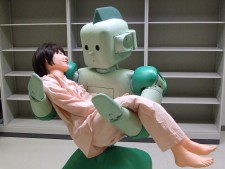SSD - Solid State Hard Drive

Samsung Electronics had developed a new data storage medium for mobile computers that enables users to process data much faster with minimal consumption of power.
The 32-Gigabyte (GB) NAND flash-based solid state disk (SSD) can upload and download data quickly and quietly as it uses instantly-accessible, static NAND flash memory instead of the rotating discs found in hard drives.
SSD weighs only half as much as a hard drive, reads data three times faster and writes data 1.5 times quicker, it said and It consumes a mere five percent of the electricity needed to power a hard disk drive and operates silently as it requires no motor or any other noise-making parts.
Samsung expects NAND flash applications to expand from current applications in digital still cameras (DSCs), MP3 players, and 3G mobile handsets to mobile and digital consumer appliances, as NAND Flash becomes more widely recognized as a reliable, high-density, data storage medium for the widest range of consumer demands.
"Flash memory will fast replace hard disks in all mobile computing applications," Hwang was quoted by the Korea Herald as saying at the forum.
Hwang said that by 2008, laptops equipped with SSD will account for 30 percent of the global laptop market as the price of a 32-gigabyte SSD will fall from the current $500 to $200 in that space of time.
The global SSD market will surge from $540-million in 2006 to $4.5-billion by 2010, Samsung said.






